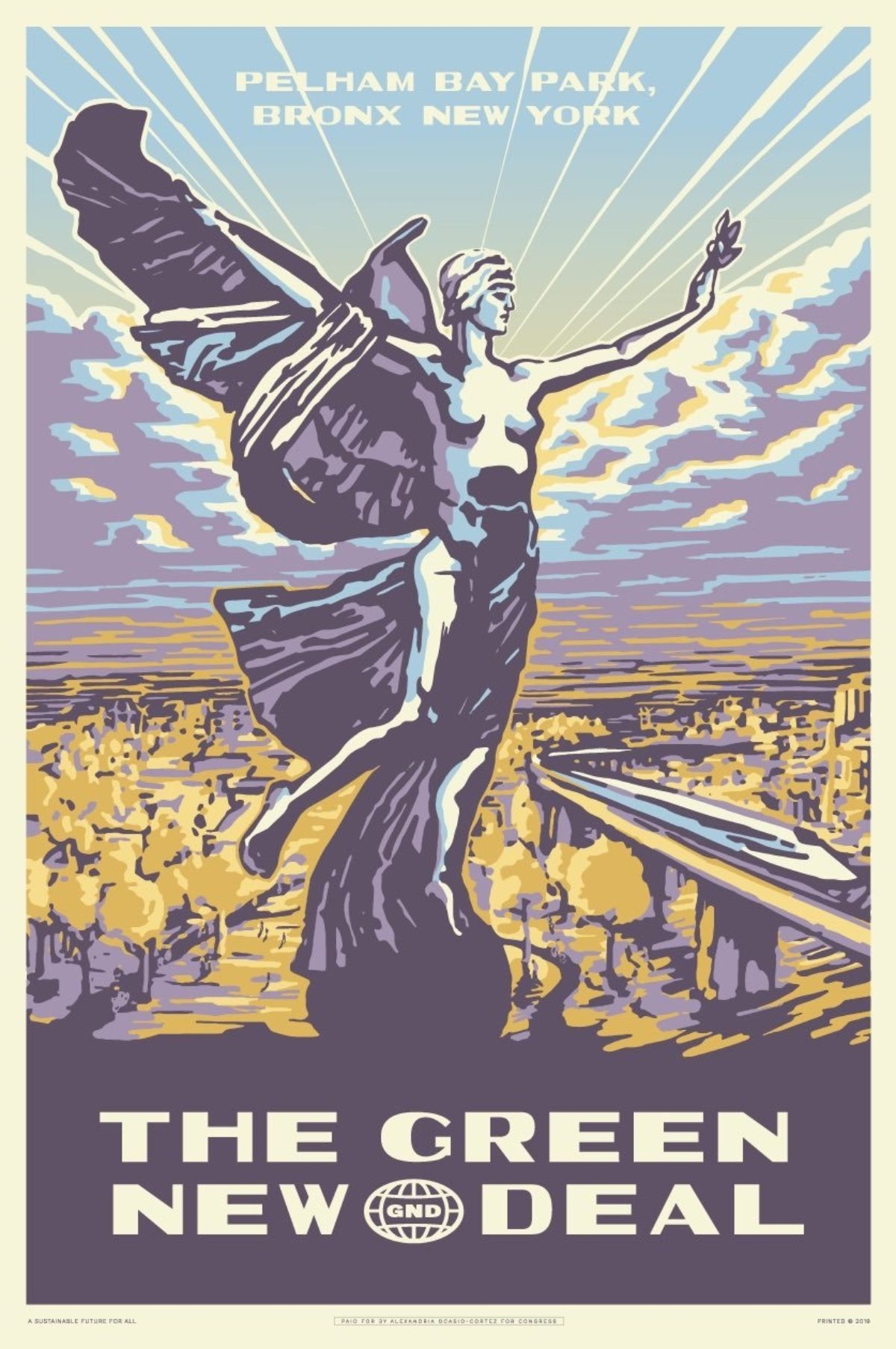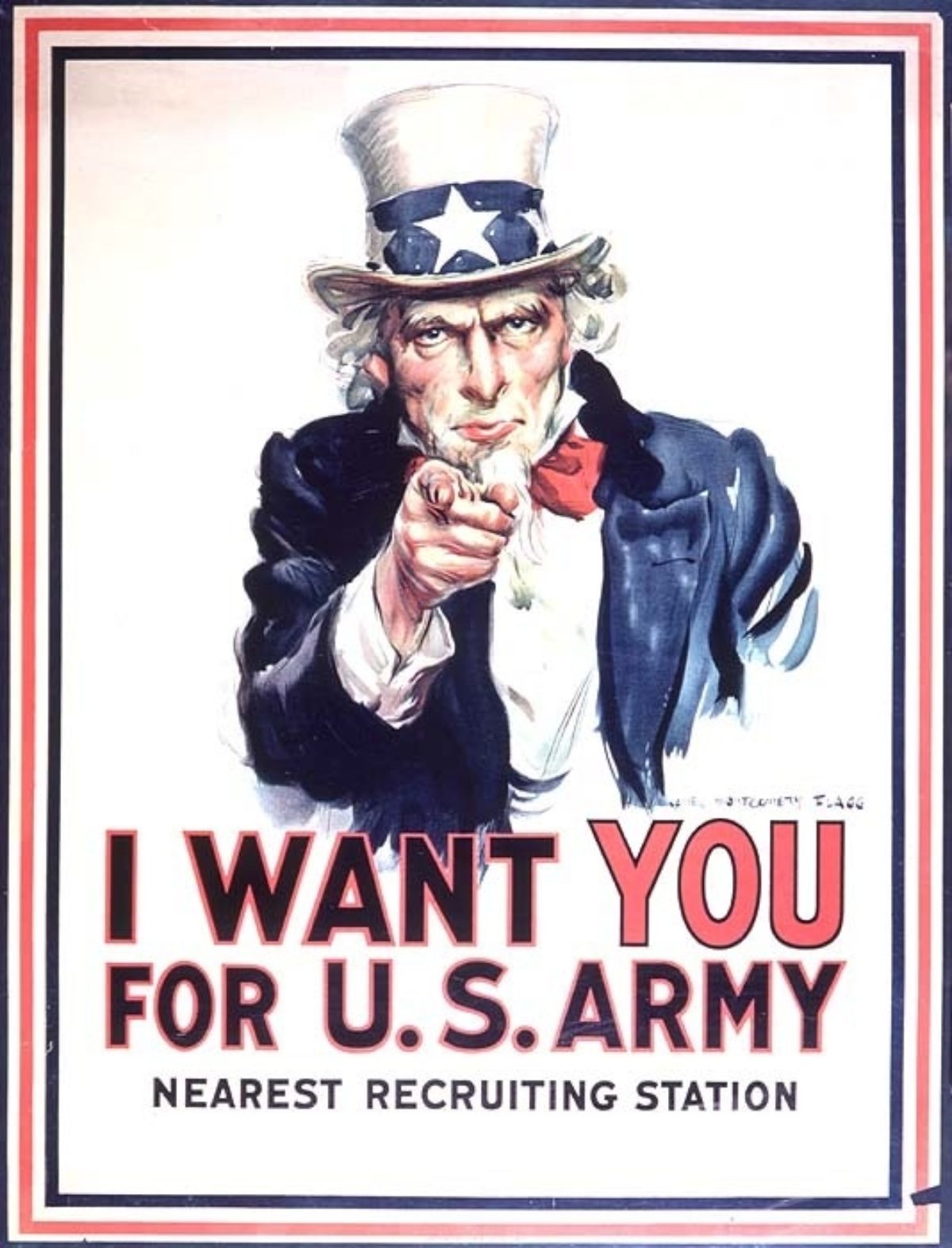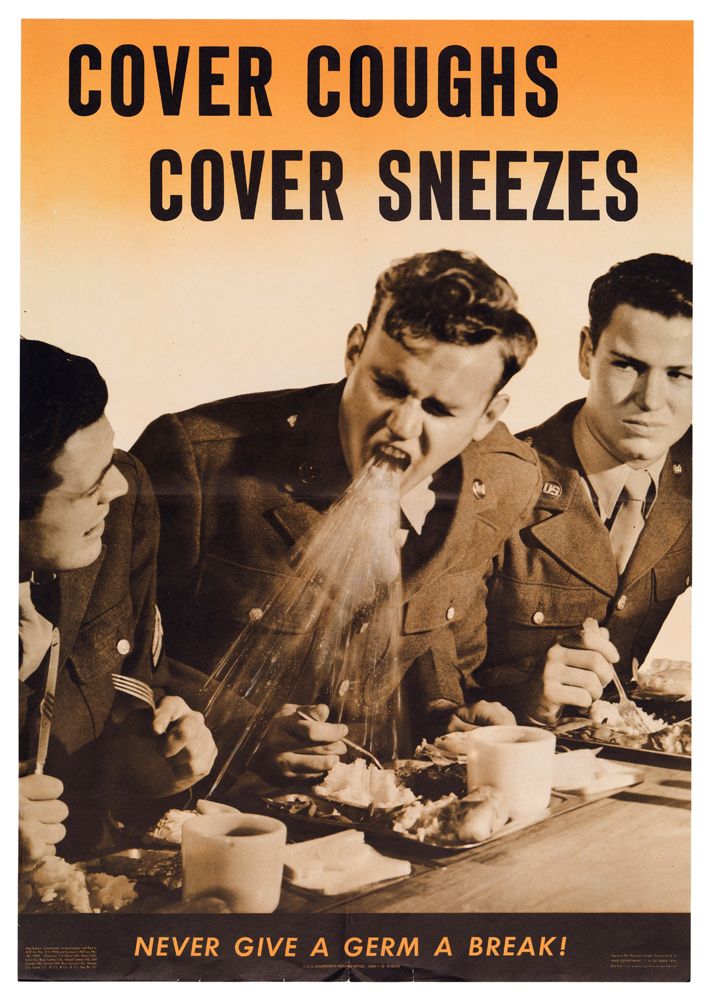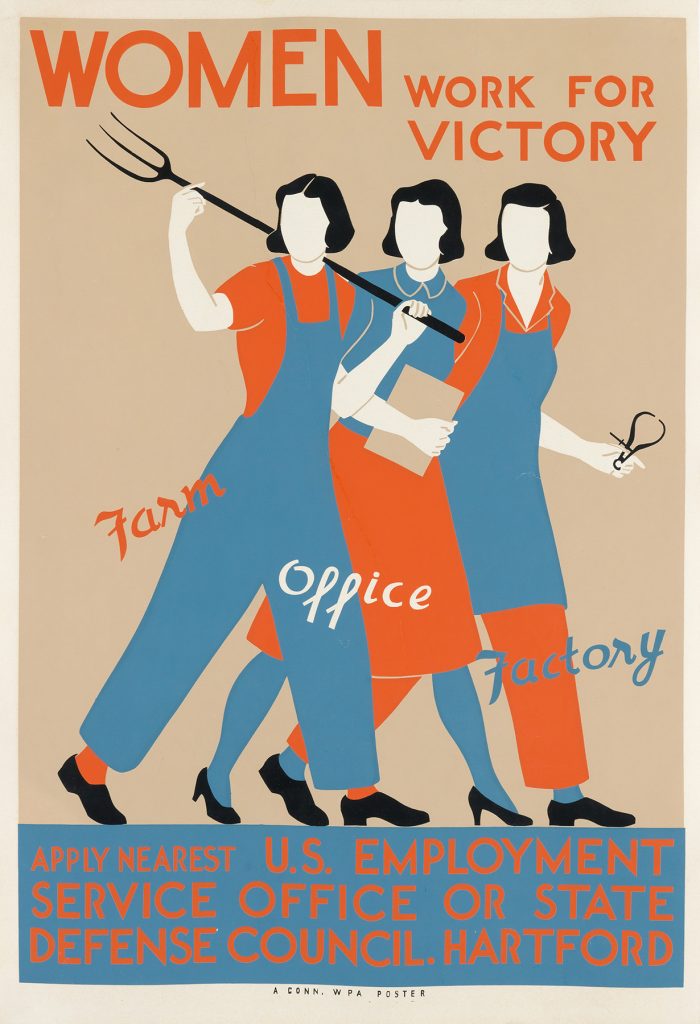
WPA Posters
Lauren Goldberg is a specialist and department manager at Swann Galleries. This article originally appeared on Swann’s website, and represents her favorite WPA posters during her tenure at the auction house. We asked Swann if we could share Lauren’s writing since so many contemporary designers are creating posters in response to the Covid-19 health crisis and have been inspired from the dynamic posters of the WPA period.
In addition to the many murals, sculptures, paintings, and photos commissioned by the Works Progress Administration during the 1930s and 40s, graphic artists designed hundreds upon hundreds of posters for the agency, of which about two million copies were printed and only a fraction currently survive. Promoting the arts, books, public health, social programs, civic responsibility, travel, and more, the posters that resulted from FDR’s New Deal represent a unique period in American history and continue to be collected for their cultural significance and aesthetic appeal.
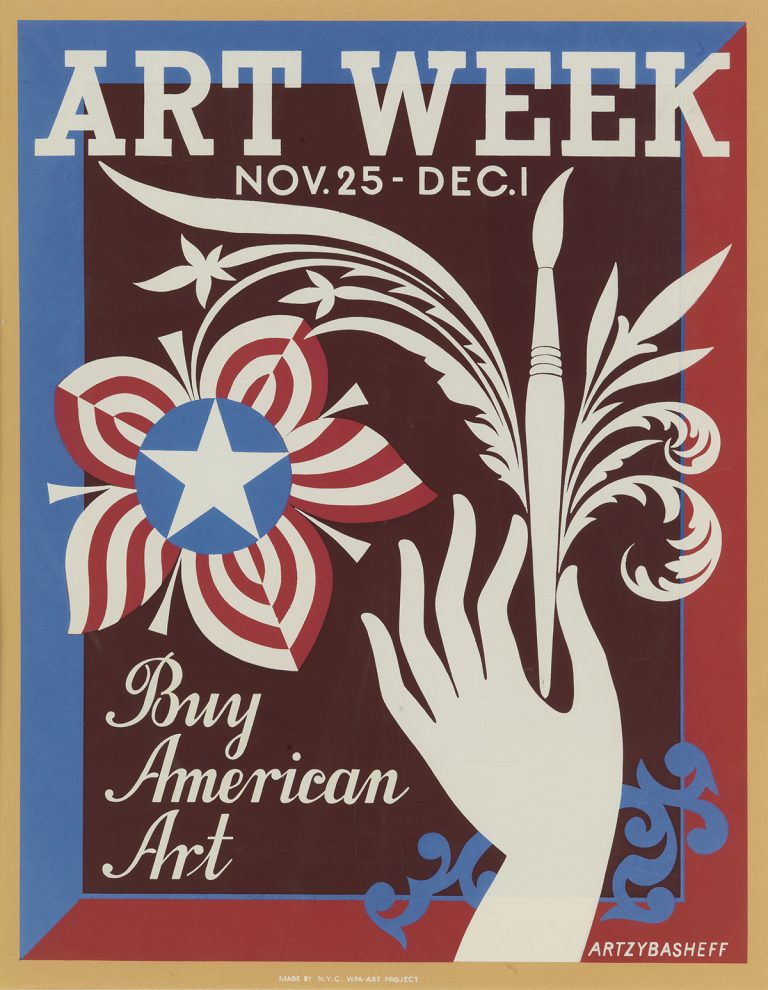
Art Week, Boris Artzybasheff, c. 1939
Not all WPA posters were signed by their artists, and while some went on to greater renown in the art world at large, most of the designers remain known only for their graphic work of this period. One of the artists who went on to greater acclaim was Boris Artzybasheff, a prominent Russian-American illustrator. The accomplished design pictured above bears all the trademarks of a desirable WPA image: both elegant flourishes and geometric framing, a patriotic palette, and a positive message.
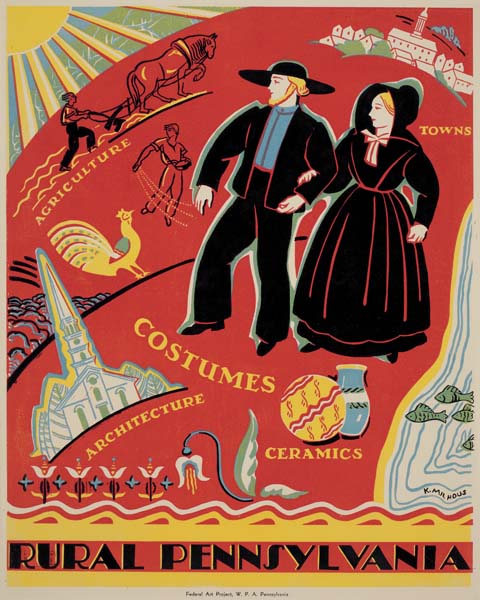
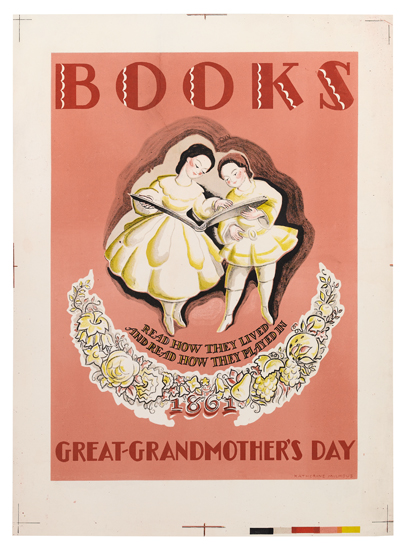
Left: Rural Pennsylvania, Katherine Milhous, c. 1939
Right: Books, Katherine Milhous, c. 1939
Katherine Milhous, who became an award-winning book illustrator, was also known for her WPA posters related to rural Pennsylvania Dutch culture as part of the Pennsylvania Art Project. Philadelphia-born, she created affectionate images of the local Amish and Mennonite communities.

Four book-related posters, Designers Unknown, c. 1940
It’s no mystery why WPA book and library posters hold special interest for us at Swann. Artists devised designs advertising Book Week, advocating public libraries, and promoting literacy and the joys of reading, in addition to instructional guides for how to take care of books. Our bibliophile clients must agree with our taste, as these tend to bring among the highest prices for WPA posters.

Women Work for Victory, Designer Unknown, 1940
During the early days of WWII, before the end of the WPA, many artists turned to creating vivid and direct war propaganda. This image is another example of a World War II-era poster that adopts the WPA format and aesthetic.
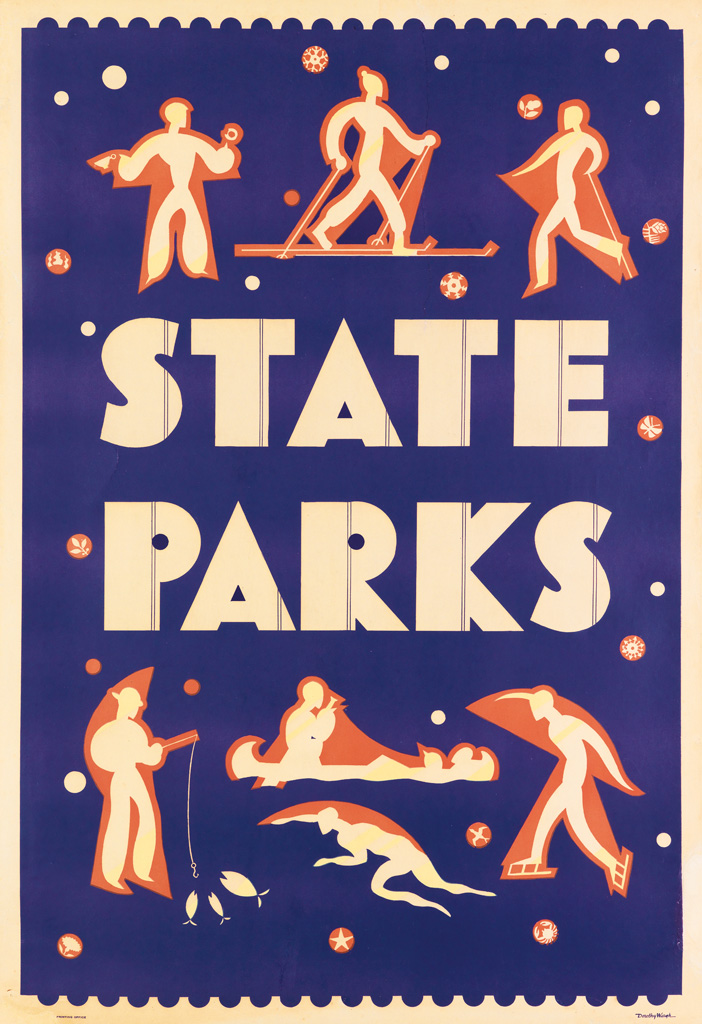
State Parks, Dorothy Waugh, c. 1934
Some of the most iconic and most coveted WPA posters are those promoting travel to U.S. National Parks. The beauty of our natural environment inspired artists to produce enduring imagery through some of the finest examples of graphic design. Dorothy Waugh, one of several notable female artists of the WPA era, used Modernist typography, bold graphics, and a limited palette for her posters.
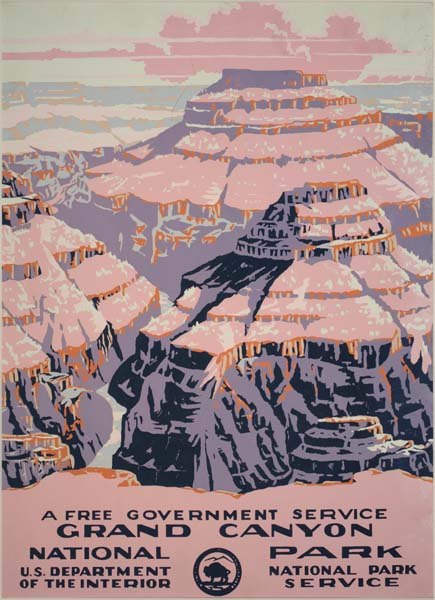
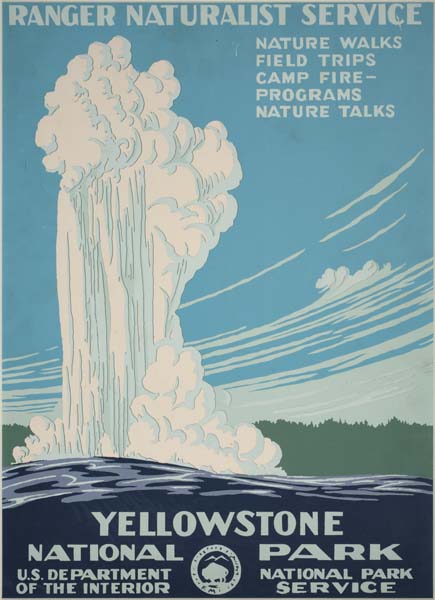
Left: Grand Canyon, Designer Unknown, c. 1938
Right: Yellowstone National Park, Designer Unknown, c. 1938
In a 2006 sale of Rare & Important Travel Posters, Swann offered an exceptional run of National Park posters put forth by the US Department of the Interior and the National Park Service—each as rare, colorful, and monumental as their subjects.
The recognizable and striking style of WPA poster art has taken on a new life today with modern environmental and political campaigns to highlight the importance of the National Parks and saving our country’s natural resources. The WPA’s style and its historical significance lent itself perfectly to the messages of Alexandria Ocasio-Cortez’s 2019 posters for the Green New Deal.
In recent years, artist Hannah Rothstein has also reimagined these WPA posters to predict what the parks might look like in the future without comprehensive climate change policies.
All images c/o Swann Galleries.

